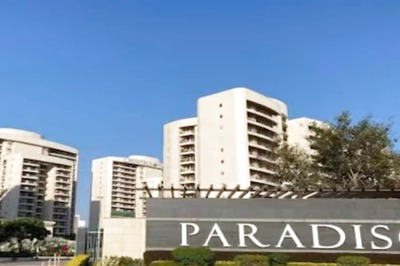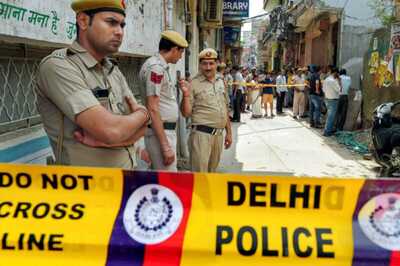
views
It took 200 officers across 68 districts and 77 teams in nine states to achieve the maximum saturation in digitising land records, overcoming challenges of manpower, resources, connectivity and endless coordination over the past few years. They were on Tuesday felicitated by ‘Bhoomi Samman’ by President Droupadi Murmu for achieving 99% and above target.
These revenue officers were recognised for their efforts in the first such performance grading exercise carried out by the department of land resources under the Ministry of Rural Development (MoRD) during February-November last year. The districts are graded under three bands — platinum (99% and above), gold (95% and above till 99%) and silver (90% and above till 95%).
The nine states with a platinum grade leading the way under Digital India Land Records Modernisation Programme (DILRMP) include Tripura, Assam, Jharkhand, Chhattisgarh, Gujarat, Bihar, Odisha, Madhya Pradesh and West Bengal.
While making it to the top few districts was challenging on its own, officers involved in the task said it’s a dynamic process, which will eventually help better delivery of services to people in the rural landscape.
“We had legacy records in paper format to digitise which we used a software. We have the records available to be accessed by people on ‘Dharitree’, an online citizen service platform. To digitise these records, the first step from data entry to quality check and physical verification is a long exercise, each stage of which throws up its own set of challenges. These range from training people in the software, getting all stakeholders on board, acceptability of a new system and lack of robust IT support system, which means issues with internet connectivity, power backup, availability of functional hardware systems etc. Having achieved it now, it will help in issues of deciding ownership and fast pace economic benefits,” said Shantanu P Gotmare, director of land records and survey, Assam.
The districts are graded against six components — computerisation of land records; digitisation of cadastral maps; integration of cadastral maps with Right of Record (ROR); computerisation of property registration; integration of property registration (registry office) with land records (revenue office); and creation of modern record rooms.
The Centre is now aiming for digitising land records across all districts by March 31 next year. According to the ministry, under DILRMP, 94% of digitisation targets have been met across the country. Meanwhile, the ministry plans to add two more components to digitisation including linking of digitised records with e-courts to check fraudulent transactions and prevent disputes thereof.
Sonmoni Borah, joint secretary, department of land resources said initiatives under DILRMP are technological at the core and are therefore scalable, interoperable as far as providing services to the citizens are concerned. “Having authentic, verified and readily available land records can unlock huge economic benefits for the country in terms of faster delivery of services, land acquisition and building of infrastructure, among others,” said Borah.
“This was the first time that we institutionalised the initiative. Performance grading will now be an annual feature. It helps galvanise team spirit, as before this there was no recognition as such for pure revenue work,” he added.
Puneet Agarwal, principal secretary, Tripura, which is one of the top performing state with all its eight districts meeting all the digitisation components, said the state started computerisation of land records back in 2003-04 and has conducted two revisional surveys of land parcels since it came into being between 1960 and 1972.
“Work on digitisation of land records has been on for some time. There were challenges faced by the teams in terms of manpower, funds and resources. It’s been done and is a continuous process with mutation, it is the updating of cadastral maps that will require more time,” said Agarwal.
While shortage of skilled manpower was one of the major issues across districts, the pandemic also delayed the work, said another revenue officer from West Bengal. “The teams worked untiringly through the years, but the pandemic disrupted the efforts majorly and was picked up again thereafter. The credit also goes to registry offices, which helped expedite the task,” said Debrati Ghosh, ADM and land revenue officer, Howrah district.
Digitisation process of land records and registration is intended to help mitigate the huge pendency of court cases involving land disputes cutting down the GDP loss to the country’s economy due to projects being stalled over litigation involving land disputes and increasing transparency in the system.


















Comments
0 comment